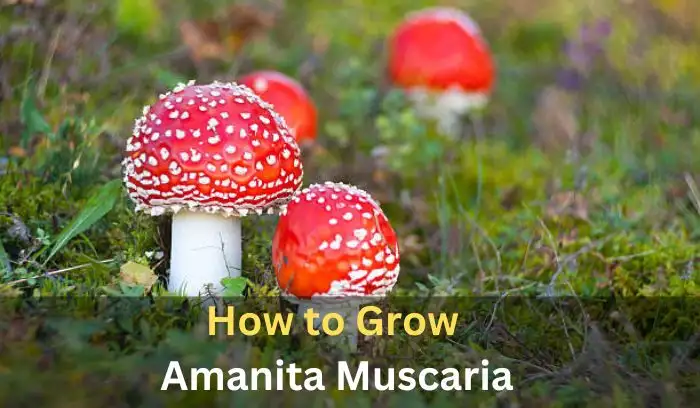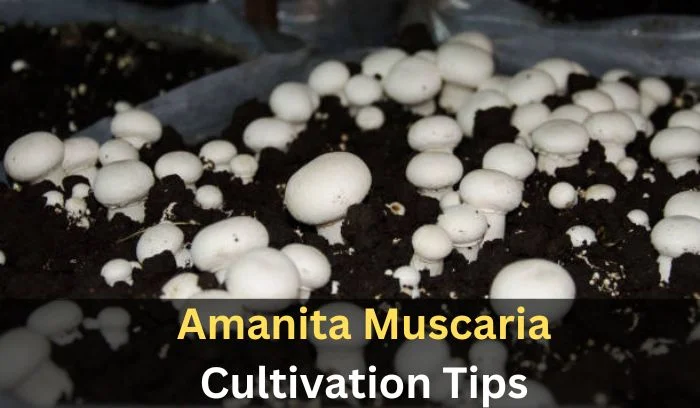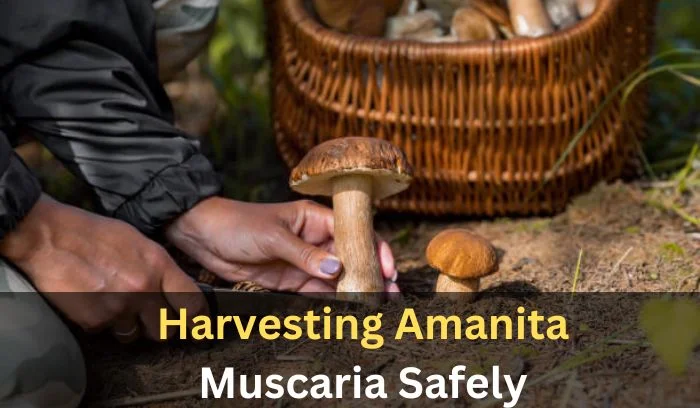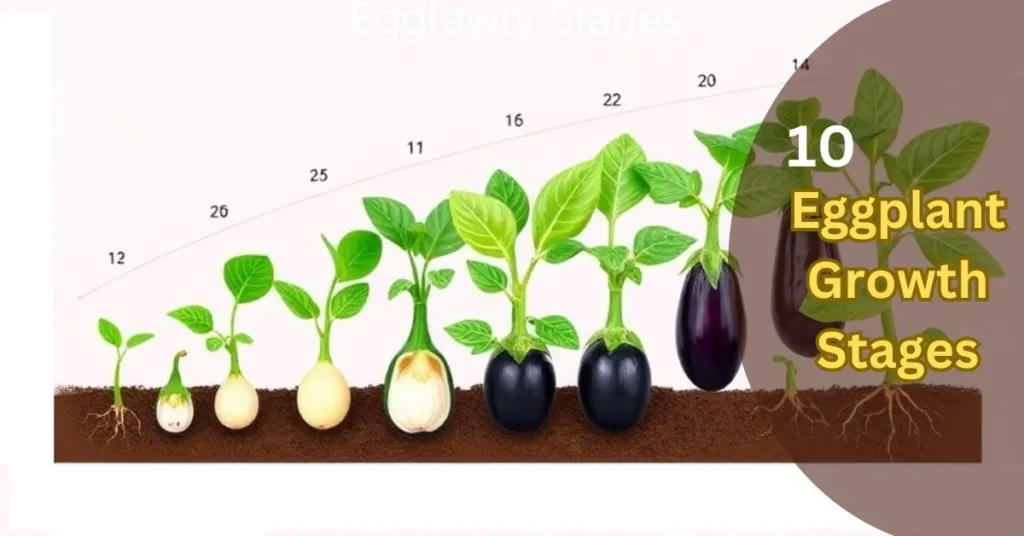If you’ve ever come across an Amanita Muscaria while wandering through a quiet forest, you know the beauty of this striking red mushroom with its iconic white spots. It’s a magical sight, often pictured in online pictures and stories that have captured the imagination of many. The combination of its bright color and mysterious charm is what makes it so captivating.
But what if you could bring a bit of that magical allure into your home? Growing Amanita Muscaria requires some basic knowledge and patience, but it’s an adventure worth pursuing. By recreating the right conditions of damp earth and the warmth of fallen leaves, you can start your own mushroom-growing journey right at home.
Getting it just right takes time. You need to understand how to mimic the forest environment that this species thrives in. The mushroom-growing process involves patience, as it can take weeks to see progress.
But once you see the first signs of growth, the feeling of success will capture your heart, just like how stories of Amanita Muscaria have captured so many over the years. In the end, it’s not just about the mushroom itself, but the experience of growing something so unique and magical.
Key Points
| #- | Key Point | Details |
|---|---|---|
| 1- | Obtain Spores or Mycelium | Purchase from reputable suppliers for faster growth. |
| 2- | Prepare Sterile Environment | Use a clean space, like a laminar flow hood, to prevent contamination. |
| 3- | Inoculation | Inoculate your substrate with spores or mycelium for best results. |
| 4- | Incubation | Maintain the substrate in a dimly lit environment with an ideal temperature of 70°F (21°C) and elevated humidity levels. |
| 5- | Fruiting Chamber | Once mycelial growth appears, move to a fruiting chamber with proper humidity, lighting, and ventilation. |
| 6- | Harvesting | Wait until mushrooms are fully developed with red caps and white spots. Handle with care. |
| 7- | Spore Collection | Collect spores from mature mushrooms for future cultivation. |
| 8- | Ideal Environment | Replicate natural conditions (moist, cool, high humidity) for best results. |
Understanding Amanita Muscaria
The Amanita Muscaria, also known as fly agaric, has a rich and fascinating history. Its striking looks, with a red cap dotted with white spots, have made it a symbol in many cultures around the world.

This unique mushroom is more than just a pretty sight – its significance runs deep. It has been used for centuries in various ways, from traditional rituals to medicinal purposes. The varied uses of Amanita Muscaria make it even more intriguing, showing just how much this mushroom is a part of global folklore and healing practices.
From the forests of the northern hemisphere to different corners of the world, Amanita Muscaria has earned its place in many traditions. Its appeal lies in its beauty and mystery, drawing people in with its bright colors and cultural importance.
Whether it’s the worldwide myths surrounding it or the scientific interest in its properties, this mushroom remains a fascinating subject of study. Its influence on both ancient and modern cultures continues to make it a subject worth exploring.
What is Amanita Muscaria?
Amanita Muscaria is a striking mushroom belonging to the Amanita genus. The vibrant red cap with unique white dots makes it stand out clearly. Throughout history, this mushroom has appeared in various myths and art, often symbolizing magic and spirituality.
Known for its ability to alter consciousness, Amanita Muscaria has also been a key element in shamanic rituals, where it was used to connect with the spiritual world. Its deep connection to both folklore and mystical practices makes it one of the most fascinating mushrooms in nature.
Over time, Amanita Muscaria has been seen as a symbol of transformation, connecting people to different realms of existence. Whether in ancient stories or modern interpretations, it continues to captivate those interested in the mysteries of nature, magic, and the human mind. Its presence in art and myths reflects a broader cultural and spiritual significance that is still alive today.
Common Characteristics of Amanita Muscaria
Amanita Muscaria is a fascinating mushroom with several unique traits that make it easy to identify. The cap starts out convex but becomes flat as the mushroom matures. It’s a bright red with white speckles, making it stand out in forests. The gills are unattached and widely separated, usually appearing in shades of white or cream.
The stem is characterized by its white coloration and features a bulbous base, which may occasionally be adorned with a ring. Its spore print color is also white. This mushroom is most commonly found in coniferous and deciduous forests, making these habitats key for growing or foraging it.
Understanding the key features of Amanita Muscaria helps in recognizing its beauty and potential uses. Whether for foraging or appreciating its beauty, knowing these characteristics ensures safe identification. The cap shape, gills, and habitat are especially important when distinguishing it from other mushrooms.
How to Grow Amanita Muscaria
To successfully grow Amanita Muscaria, it’s important to understand its specific needs. This unique mushroom thrives under particular conditions, so it’s essential to recreate the right environment.

The best way to start is by ensuring you have the right substrate, as it plays a key role in promoting healthy growth. Finding the perfect balance of moisture, temperature, and nutrients is vital for this mushroom to flourish.
As you begin growing Amanita Muscaria, be mindful of the conditions it needs. A little patience and care will go a long way, but having the proper substrate and environmental factors in place will ensure the best results for your mushroom-growing adventure.
Required Conditions for Growth
Temperature
When growing Amanita Muscaria, the temperature plays an important role. This mushroom grows best within a range of 60°F to 75°F (approximately 15°C to 24°C). It’s essential to keep the temperature within this range to ensure healthy growth and avoid stress.
Amanita Muscaria thrives in these moderate temperatures, mimicking the natural conditions it would experience in the wild. If the temperature is too high or low, growth may slow down or stop altogether.
The ideal temperature range is crucial to creating the right environment for your Amanita Muscaria to flourish. Keeping the temperature between 60°F and 75°F will help maintain the best conditions for this mushroom’s growth.
Light Exposure
When growing Amanita Muscaria, it’s important to understand its light exposure needs. This mushroom prefers indirect sunlight, as direct sunlight can be harmful to its growth.
While Amanita Muscaria doesn’t need direct sunlight to thrive, it still requires a well-lit environment that mimics the natural light found under the forest canopy. Too much direct sunlight can cause stress, slowing down its development.
Creating the right lighting conditions by providing indirect sunlight will help the mushroom grow strong and healthy. Be sure to avoid placing it in direct sun, as this can damage the mushroom’s delicate structure. By respecting these needs, you can ensure the best conditions for its growth.
Humidity
To grow Amanita Muscaria successfully, maintaining the right humidity is essential. This mushroom thrives in an environment with high humidity levels, typically between 70% and 80%. The moist air provides the ideal conditions for its growth. Without the proper moisture in the surrounding environment, it may struggle to flourish.
These humidity levels are required for the mushroom to thrive and reach its full potential. Creating a moist atmosphere helps the mushroom grow strong, as it mimics the natural conditions where it grows best.
Airflow
Good air flow is important when growing Amanita Muscaria. If there isn’t enough air, it can lead to stale air building up, which slows growth. Proper ventilation is key to keeping the environment fresh, allowing the mushroom to grow without obstacles.
Air flow helps prevent moisture buildup and promotes a healthy atmosphere. Stale air can slow the process, so maintaining steady air movement is crucial for faster and healthier growth. Without it, the growth of the mushroom will be hindered, making it hard for the plant to thrive in the long run.
In a space with the right air flow, the mushroom will thrive and grow better. Without sufficient air, it won’t be able to reach its full potential. Good airflow ensures the Amanita Muscaria gets the optimal environment for growth, keeping things fresh and encouraging healthy development.
Choosing The Right Substrate
When growing Amanita Muscaria, it’s important to choose the right substrate. This is the material where the mushroom will get its essential nutrients. The substrate provides the right environment for the mushroom to thrive, so picking the right one is crucial for successful growth.

There are several choices available, but they all need to be nutrient-rich and well-suited to the specific needs of the mushroom. Whether you go for soil, wood, or other organic materials, the substrate must help the mushroom grow strong and healthy.
Decaying Leaf Litter
When selecting the right substrate for your fungi or plants, decaying leaf litter is a fantastic choice. It provides a natural home for microorganisms and fungi, offering them a rich environment to thrive in.
The decomposition of organic matter in this substrate creates a balanced ecosystem, where microorganisms work to break down materials like carbon and nitrogen, contributing to the nutrient cycle. This process not only sustains biodiversity but also supports the growth of plants and fungi, creating a healthy, thriving habitat.
Leaf litter has the perfect combination of moisture, temperature, and humidity for the decomposition process. It improves the soil structure by adding essential nutrients, such as carbon and nitrogen, which plants need to grow.
Whether you’re growing mushrooms or nurturing garden plants, this substrate mimics the natural habitat found in the forest floor, making it an ideal, sustainable option. Plus, it plays a significant role in ecosystem balance, where nutrient cycling helps maintain the overall health of the soil and environment. This is why decaying leaf litter remains a top pick for anyone seeking to create a thriving ecosystem.
Pine Needle Mulch
When it comes to choosing the right substrate, pine needle mulch is an excellent option for anyone looking to grow healthy mushrooms or plants. The acidity in the mulch helps create the perfect environment for fungi to thrive, providing them with the necessary nutrients to grow.
This organic matter breaks down over time, adding important components like nitrogen and carbon to the soil, which are essential for plant and fungi growth. The mulch also has a natural ability to maintain moisture, which helps with the decomposition process and supports a healthy ecosystem.
Not only does pine needle mulch improve soil structure, but it also balances the pH level of the soil, making it an ideal choice for a variety of plants and mushrooms. It’s a sustainable and nutrient-rich substrate that enhances the biodiversity of the forest floor, helping to maintain a healthy ecosystem.
The mulch’s ability to regulate temperature and humidity further supports ecosystem health, creating a thriving and balanced environment for plants and fungi alike. Whether you’re working with mushrooms or other plants, pine needle mulch offers an effective and natural solution for long-term growth.
Wood Chips
When choosing the right substrate, wood chips are an excellent choice for creating a healthy environment for plants and fungi. Made from hardwood, they provide essential nutrients like carbon and nitrogen, which help support growth and promote a sustainable ecosystem.
The acidity of the chips is low enough to avoid harming plants, making them a great option for various types of vegetation. Wood chips also offer a perfect balance of moisture and pH, which contributes to a healthy soil structure.
The decomposition process of wood chips releases organic matter into the soil, enhancing its nutrient cycling capabilities. This makes it a valuable substrate for improving ecosystem health and supporting biodiversity.
As the chips break down, they enrich the soil and create a natural habitat for microorganisms, improving the ecosystem balance. By maintaining the proper temperature and humidity, wood chips contribute to a nutrient-rich environment that supports plant and fungi growth in a forest or garden setting.
Organic Compost
Organic compost is a powerful substrate that can help your mushroom or plant garden thrive. It’s packed with nutrients that support healthy growth and create the ideal environment for both fungi and plants.
The organic matter in compost adds essential elements like nitrogen, carbon, and other important minerals to the soil, ensuring that plants and mushrooms grow strong.
The decomposition process of organic compost also helps improve the soil structure, maintaining the right levels of moisture and pH for optimal plant and fungi health.
What makes organic compost so effective is its ability to enhance the biodiversity of the ecosystem, promoting a sustainable and balanced habitat. It contributes to the nutrient cycle, replenishing the soil and boosting ecosystem health.
The compost’s natural organic-rich composition makes it a great choice for those looking for a nutrient-rich substrate that supports plant health while maintaining ecosystem balance. Whether you’re growing mushrooms or other plants, organic compost provides the foundation for a thriving garden that respects nature’s cycle.
Amanita Muscaria Cultivation Tips

Best Time of Year to Grow
When it comes to growing Amanita Muscaria, timing is crucial. The best time to plant these mushrooms is from late summer to early fall. During this period, the temperature is perfect for spore growth, helping the mushrooms thrive.
If you plan your cultivation around these months, your chances of having a good harvest increase significantly. The seasonal changes at this time create the ideal environment for mushroom growth, but you must pay attention to the health of your mushrooms as the season shifts.
It’s important to note that timing plays a vital role in the overall success of your cultivation. Even slight variations in temperature or seasonal changes can affect your mushrooms’ health and growth rate. By aligning your planting schedule with these important factors, you can improve your chances of success and achieve a thriving crop of Amanita Muscaria.
Environmental Factors to Consider
Humidity
When growing mushrooms, humidity plays a huge role in their development. Maintaining the right moisture levels in the growing environment is crucial, as it directly helps your mushrooms thrive and grow well.
Too much or too little moisture can hinder their progress, so it’s important to monitor and adjust the humidity levels carefully to ensure your mushrooms have the perfect environment to flourish. Proper humidity supports healthy growth and increases the chances of a successful harvest.
Light
When managing the environment for plants like mushrooms, the right amount of light exposure is key. Too much direct sunlight can harm their growth, drying out the air and affecting temperature and humidity.
However, some indirect light is good because it maintains a balance, providing optimal light without overwhelming the plants. The light intensity must be carefully controlled to avoid negative effects on the plants’ health and overall growth.
Proper light conditions ensure that mushrooms can thrive, as the right amount of light supports healthy growing conditions. The goal is to keep light exposure just enough to encourage growth while not compromising the temperature and humidity levels necessary for their survival.
Temperature
When managing the temperature for growing mushrooms, it’s important to avoid any big temperature changes. These fluctuations can harm the growth process and reduce their ability to grow strong and healthy. The right range of temperature is crucial for ensuring optimal growth conditions.
A stable, consistent temperature will help mushrooms thrive and develop properly, leading to better yields. To support the mushrooms in their growth, creating an environment where temperature stays within a suitable range can significantly improve their strength and overall health.
Natural vs. Indoor Cultivation
When choosing between natural and indoor cultivation, it mainly depends on what you prefer and the growing conditions available. Natural environments often provide organic growth and may lead to better yields due to the ideal climate and soil conditions.
However, in places where the climate is not good for growing, indoor setups can be a better option. They allow you to control the growing conditions more effectively. By using indoor cultivation, you can manage temperature, light, and humidity to suit the plants’ needs.
This method works well if you’re looking for a more predictable outcome, especially when you have the right techniques and gardening skills. Ultimately, knowing which method works best for your plants and environment will help you choose the right approach for a successful harvest.
Amanita Muscaria Care Instructions
Caring for Amanita Muscaria focuses on watering and maintaining the right balance of humidity. Too much or too little water can affect its healthy growth, so it’s important to find the right level.

Grasping these factors will help make your cultivation journey much easier. Keeping humidity steady and providing proper care will lead to better results and strong growth.
Watering and Humidity Needs
Watering your Amanita Muscaria correctly is important for its growth. Too much water can make the substrate soggy, while too little can dry it out. The key is to keep the substrate moist, but not wet. To reduce evaporation, it’s best to water during the cooler times of the day, like early morning or late evening. Consistently monitor the soil moisture levels using either your finger or a moisture meter.
Maintaining the right humidity is also vital for the best growth. The humidity should be between 80% and 90%.If the air feels too dry, try using a humidity dome to keep the moisture levels steady. You can also adjust the environment by lightly misting the air if it’s too dry. This helps to create the ideal conditions for healthy growth.
Pest Control Strategies
Keeping pests away from Amanita Muscaria is important for healthy growth. Regular checks and prevention are key. Regularly examine your cultivation area for indications of pest activity. If you spot any, use organic repellents to deter common insects. You can also introduce beneficial insects like ladybugs that feed on harmful pests.
These natural pest control methods help protect your mushrooms and keep them healthy. Proper care for the environment is just as important as protecting the plants from pests. When managing the growing space, be mindful of watering methods and humidity levels.
Keep the humidity between 80% – 90% and mist lightly as needed to avoid pest problems like aphids, spider mites, and fungus gnats. Make sure to check substrate moisture regularly and maintain air circulation to create an ideal environment for your mushrooms.
How to Grow Amanita Muscaria at Home?
Growing Amanita Muscaria at home can be challenging, but it is possible with the right approach.Begin by sourcing spores or mycelium from trusted suppliers. Using spores prints or pre-grown mycelium can speed up the growing process significantly.
Next, you must create a sterile environment to prevent any contamination, which can be achieved with tools like a laminar flow hood or a still-air box. Once the space is prepared, follow the instructions for inoculation by adding the spores or mycelium to the substrate.
After inoculation, place the substrate in a dark space where the ideal temperature is around 70°F (21°C) and maintain high humidity. This is the incubation phase. Once the mycelial growth begins, transfer the substrate to a fruiting chamber.
In the fruiting chamber, provide proper lighting, ventilation, and high humidity to encourage the formation of fruiting bodies. As the mushrooms grow, you will see the distinctive red caps with white spots. Once fully developed, harvest the mushrooms carefully, taking care not to damage the surrounding mycelium. Finally, collect the spores to continue the process and replicate the cultivation in the future.
Tips for Growing Amanita Muscaria
Growing Amanita Muscaria can be rewarding, but avoiding common mistakes is essential. The right knowledge and proper care are key to improving your skills. It’s also important to know how to harvest and store them safely. This knowledge is crucial for a successful harvest.
By following the correct steps, you can ensure the best growth and enjoy a fruitful experience with Amanita Muscaria.
Common Mistakes to Avoid
Neglecting soil pH levels
One common mistake is neglecting soil pH levels, which is crucial for the healthy growth of plants like Amanita Muscaria. If the soil’s acidity isn’t right, it can severely affect how well your mushrooms grow.
It’s important to make sure the soil has the right balance, neither too acidic nor too alkaline, for the best results. Regularly checking and adjusting pH levels can prevent poor growth and help your mushrooms thrive. For this, you can use a simple pH meter to ensure the levels are within the ideal range for your crop.
Overwatering
One of the biggest mistakes many gardeners make is overwatering their plants. Too much water can cause root rot, a condition where the roots become waterlogged and suffocate, unable to absorb the oxygen they need. This lack of oxygen leads to slowing growth, making the plant unhealthy and more vulnerable to stress.
In some cases, excessive moisture in the soil can even result in the plant dying. As the roots become damaged, the plant’s overall health is compromised, and growth is severely hindered. It is essential to balance water and drainage to prevent waterlogging, which can have disastrous effects on your garden.
When the conditions are right, plants can thrive, but too much water is harmful. Often, drowning the plant in excess water may seem like you’re nurturing it, but in reality, it’s causing harm to the roots and stems.
If left unchecked, it may even lead to plant failure. To avoid this mistake, always check the moisture level in the soil before adding more water. A good rule of thumb is to allow the soil to dry slightly before watering again, which will help promote healthy growth and improve your plants’ survival rate.
Improper ventilation
One common mistake that many people overlook is improper ventilation. Without proper air flow, plants can suffer from moisture buildup, which promotes the growth of fungal diseases like mold and mildew. These diseases are caused by poor circulation and stagnant air, which prevent the plant from getting the oxygen it needs to thrive.
Ventilation is essential for creating a healthy environment for your plants, whether they are indoors or outdoors. Without it, the humidity in the air increases, making conditions perfect for harmful pathogens to spread, leading to root rot and other problems.
In my own experience, I’ve found that proper ventilation is the key to keeping plants healthy and growing. If the air is stagnant, plants can become affected by conditions like mildew or poor growth rate.
Air quality is just as important as watering or sunlight, and ensuring good air flow around your plants will help prevent buildup of moisture that could suffocate your plants and hinder their growth. Keeping the environment fresh and balanced is vital to avoid these issues and promote a thriving garden.
Ignoring local climate conditions
Many gardeners often overlook the significance of local climate conditions. Every region has its own weather patterns, temperature extremes, and seasonal changes that directly affect the growth of plants. Whether you’re growing crops or garden plants, it’s important to adjust your growing methods to fit the area.
The humidity, rainfall, and temperature in your environment will determine which plants will thrive. For example, some plants require more moisture, while others need dry conditions. Understanding these factors is essential for survival and ensuring your plants stay healthy.
From my own experience, I’ve learned that choosing the right plants for the local conditions is crucial for a thriving garden. Plants that are suited to the seasonal changes and temperature extremes in your region are more likely to succeed.
Whether you’re working outdoor or indoor, adaptation is key to promoting growth and maximizing growth potential. By recognizing the specific needs of your plants and adjusting your approach, you can avoid mistakes and improve their growth rate and overall success.
Skipping sterilization
One of the biggest mistakes gardeners often make is skipping sterilization when preparing their growing medium. Failing to sterilize the soil or medium can ruin everything you’re trying to grow. Without proper sterilization, harmful pathogens, such as bacteria, fungi, and other harmful microorganisms, can thrive.
These pathogens bring diseases that can affect the plants and ultimately harm the growth of your garden. It may also cause contamination that leads to poor survival and damaged plants, making it harder for them to reach their full growth potential.
In my experience, sterilization is an essential step that should never be ignored. The process helps remove the risk of unwanted pests, which are the root cause of failure in many gardens. It ensures the environment remains clean and free from anything that could compromise the quality of your garden. Proper prevention of such problems gives your plants the best chance to grow healthy and strong, leading to a successful and thriving garden.
Harvesting Amanita Muscaria Safely
When harvesting Amanita Muscaria, it’s important to do it correctly and safely to avoid any risks. The first step is to identify when the mushrooms are fully mature. Ensure that the caps are completely open before commencing the picking process.This ensures the mushrooms are at their best stage for harvesting.

Use sharp tools to cut the stem cleanly, avoiding any damage to the mycelium underneath, which can help future growth. Remember, Amanita Muscaria can be toxic before proper preparation, so always wear gloves to protect your hands when handling them.
It is essential to ensure that mushrooms are stored correctly after they have been harvested. Use containers that allow them to breathe and keep them in a cool place to maintain their fresh state. This ensures they stay in the best condition for later use and doesn’t affect their quality. Safely harvesting and storing these mushrooms not only ensures their longevity but also makes sure you avoid any harmful effects from toxic compounds.
How to Store Harvested Mushrooms
After harvesting mushrooms, it’s important to store them properly to maintain their freshness. Fresh mushrooms should be kept in a refrigerator for a couple of days. Place them in a paper bag, not a plastic one, to avoid moisture build-up.
Utilize them at the earliest opportunity following the harvest. If you want to increase their shelf-life, consider drying them. Simply cut the mushrooms into evenly-sized pieces and dry them using a dehydrator or a low oven until they are cracker dry. After drying, store them in an airtight jar until you’re ready to use them.
For a different storage solution, you can prepare Amanita Muscaria tea and pour it into ice cube molds before placing it in the freezer. This is a great option for those who like to microdose or prefer a long-lasting method of storage. Always make sure to handle and store your mushrooms correctly to maintain their quality and keep them safe to consume.
Conclusion
Starting your journey to grow Amanita Muscaria can be both exciting and rewarding. This guide gives you the key to your success. By understanding the unique traits of these mushrooms and applying the best growing methods, you’ll be able to care for them properly.
Each step you take is important to ensure a rewarding experience. Growing these mushrooms requires patience and dedication, but the harvest will make it all worth it. It’s not only an interesting process but also one with a rich history and many benefits.
Knowing the right approach will help you enjoy the process and ensure your environment is suitable for them. When you’re ready, use this knowledge to create the best conditions for your mushrooms to thrive. Growing Amanita Muscaria can be a fulfilling and educational experience if done correctly.
Read Also:
Can You Apply Too Much Preen to Your Plants? 5 Risks
What Do Carrots Look Like When They Start to Grow
Why Are Seeds Popping Out of the Soil When Worms Fertilize?
30 Driveway Landscaping Ideas to Elevate Your Home’s First Impression



